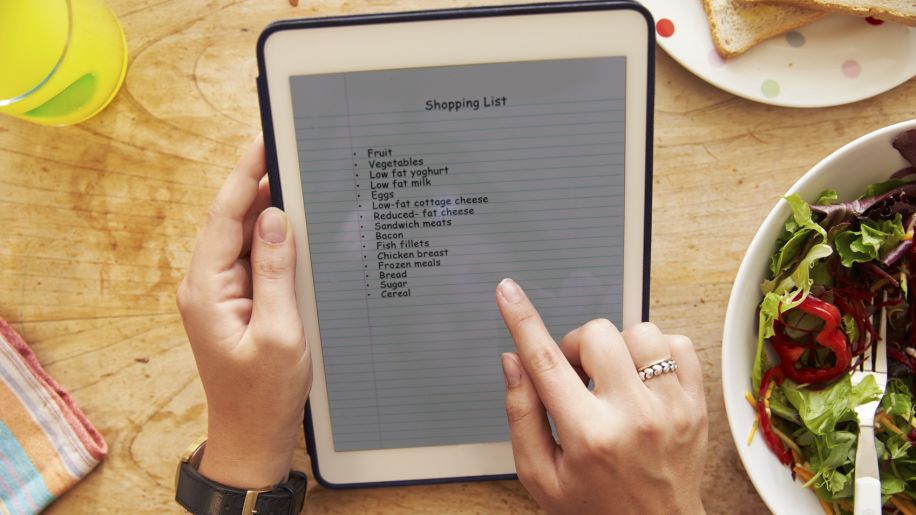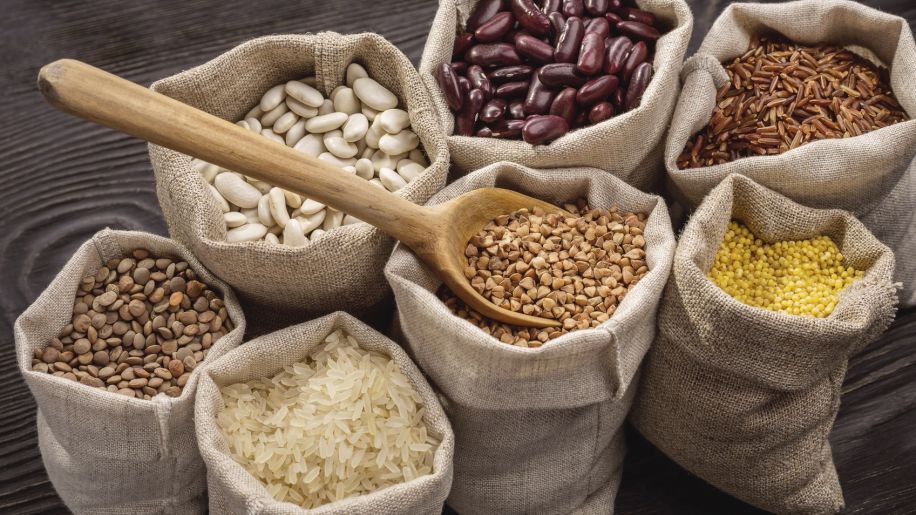6 ways to eat healthy on a budget
Use these tips to shop smart and save on healthy foods.
Updated on December 1, 2023

When time and money is tight, it can feel like shopping for and preparing healthy food is a tall order. But with a little research and preparation, eating healthfully doesn’t have to be expensive or time-consuming. It's just a matter of knowing where to look, when to shop, and which products give you the most nutrients for the lowest cost. No matter your budget, follow these money-saving tips for eating well.

Make a Shopping List
Making impulse purchases at the grocery store can throw off your diet and your budget. And many supermarkets are designed to lure you into buying packaged foods, snacks, and treats you don't really need. You’ve probably heard this before but it bears repeating: Before you visit the store, make a shopping list and stick to it. Check the supermarket's circular (either online or in print) before you arrive and plan your week's meals around healthy sale items that may otherwise be too steep for your budget, like fresh fish or seafood.
Another trick: Pay with cash. Paying with hard currency feels more tangible than swiping plastic. This might help you feel more mindful about your spending and help you limit those non-essential add-ons.

Go Meatless
Beans, legumes, and soy products are not only good sources of protein, they’re healthier and typically less expensive than animal proteins. According to October 2023 data from the U.S. Bureau of Labor Statistics, one pound of ground beef costs more than $5.00, while a pound of dried beans is only $1.60 per pound. Plant-based protein also doesn’t contain the saturated fats found in red meat and processed meats like hot dogs and bacon, making it far better for your overall health.

Buy Frozen Vegetables
Frozen vegetables are typically harvested at peak ripeness and frozen within a few hours. This preserves the nutrients and taste of the veggies—making them just as healthy as buying fresh, and they also often cost less. Always choose frozen over canned veggies, which can be loaded with sodium. Another perk of buying frozen versus fresh? Your produce won’t spoil as quickly, saving you even more money over the long run.

Stock Up On Canned Fish
Canned fish, like chunk white tuna and salmon, is high in quality protein and healthy omega-3 fatty acids and typically more affordable than fresh seafood. Canned fish also has a longer shelf life, so you can stock up when it’s on sale and enjoy it months later. Opt for fish canned in water. It has less fat than fish canned in oil.

Visit the Farmer's Market
Fruits and veggies bought at the farmer’s market are often richer in vitamins and nutrients—and flavor—than what you’ll find in the produce section of your grocery store. Why? Locally grown produce is picked at the peak of ripeness. Produce found at the supermarket is typically picked before it’s fully ripe and left to ripen in a truck as it travels long distances to the store. When they're in season, many locally grown fruits and vegetables, like zucchini and squash, are a better buy as well. Stock up when you have the chance and freeze some of your bounty. You’ll be able to enjoy favorite fruits and veggies, out of season, at no additional cost.

Stick to the Outer Aisles
Focus on shopping the perimeter of the supermarket. Why? The aisles in the center of the store are typically filled with highly processed packaged items that are generally weaker from a nutritional standpoint than the fresh and refrigerated fruits and vegetables, dairy products, and meats and seafoods you'll find on the edges of the market's layout. If you need basics like mustard or flour, look at the top and bottom of the shelves, which is where you’ll often find less-costly generic or store brands. Or consider shopping the bulk aisle (if your market has one) to stock up on basics at typically lower prices.

Academy of Nutrition and Dietetics. Creating a Grocery List. Reviewed: March 07, 2022.
U.S. Bureau of Labor Statistics. Average Retail Food and Energy Prices, U.S. and Midwest Region. October 2023.
UCLA Health. Canned Versus Frozen Fruits and Vegetables: What's Better for You? May 14, 2020.
University of New Hampshire. Health Benefits of Eating Locally. May 17, 2022.
Mayo Clinic Health System. Grocery store tour: Shopping the perimeter. March 23, 2018.
Featured Content

article

slideshow

article
